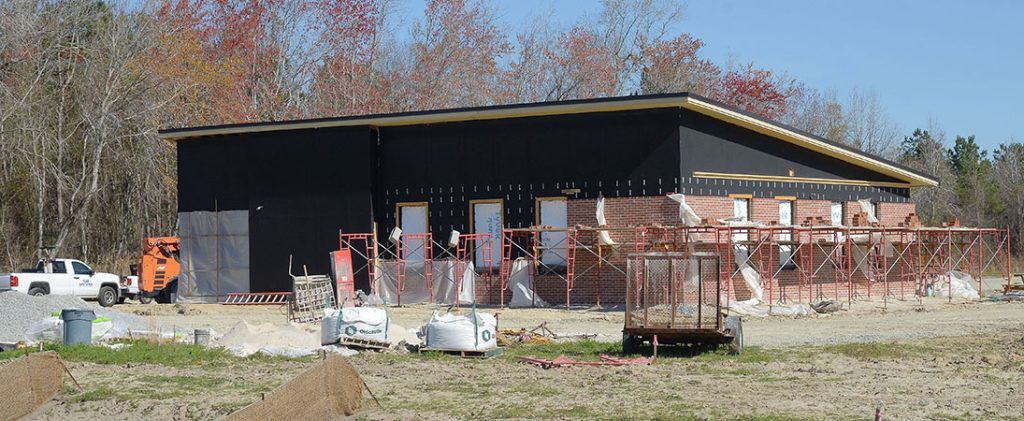
Craven County is moving forward with a number of local projects to update its aging facilities and infrastructure over the coming year.
New facilities that will house the county’s Craven Area Rural Transit System program and a county consolidated fuel station are currently under construction at the Craven County Judicial Center on Clarks Road in New Bern.
The $1.8 million CARTS building, which broke ground last October, will house the county’s CARTS administration and is projected to be finished by July or August 2023, according to County Manager Jack Veit.
A new county consolidated fuel station being built just across the road will serve the county’s vehicle fleet and provide a reserve fuel source in the event of a gas shortage, hurricane or other unforeseen problem, Veit said.
The project is tentatively set to be completed in February 2023.
The new CARTS facility is among the top priorities the county is pursuing based on recommendations from the Craven County Facilities Master Plan and Space Needs Assessment that was commissioned from Oakley Collier Architects. The recommendations, which cover priorities stretching over a 10-year window, were presented to the Craven County Board of Commissioners in 2019.
According to Veit, initial work is also underway on another of the plan’s recommendations — the expansion of the county Department of Social Services building on Neuse Blvd. in New Bern.
Veit said the county is planning to use approximately $10 million in American Rescue Plan money for the DSS expansion project, which calls for a two-story building on the existing site that would measure 20,000 square feet on each floor.
Veit said he hopes to see the construction of the new DSS building begin by the fall of 2023.
The project is currently in the design work phase, which is expected to be completed by this spring.
A Priority 2 recommendation included in the master plan that is currently underway is the renovation of the old sheriff’s office and jail behind the county courthouse.
According to Veit, the approximately $8.9 million project will change some aspects of the courthouse’s exterior appearance while providing Americans with Disabilities Act-compliant accessibility. The work will also raise all the exit doors of the building above the floodplain, Veit said, making it more secure from natural disasters.
One master plan proposal that is not being pursued is the relocation of the county administration and its emergency operations center to the Craven County Judicial Center. The estimated $14 million plan was put on hold indefinitely after initial discussions and was likely made obsolete by the county’s $6 million purchase last December of the New Bern waterfront property owned by the Sudan Shriners. The property consists of four pieces of land on the corner of Broad and East Front streets, including the iconic Sudan Shriners Temple at 403 E. Front St.
According to Veit, the county plans to use the property as a parking area for the Craven County judicial system and government activities and to provide a footprint for future growth in downtown New Bern.
“To keep the court system working and the county operations working we had to make sure we protect the parking,” Veit commented at the time of the purchase. “It’s a commitment by Craven County to continue in our operations in downtown New Bern. It’s a future footprint of Craven County government on this site.”
Among other projects on the county’s radar is the replacement and mitigation of Lawson Creek Park’s Water System Booster Station.
The $10.5 million project will build up the facility and replace an interim pump that was installed a year ago to replace an underground system damaged in Hurricane Florence.
According to Veit, a contractor has placed the order for the equipment, which will take roughly 6 months for fabrication.
Phase 2 of the project will replace outdated copper telephone lines connecting the county’s water system with new fiber optic cables.
Assistant County Manager Gene Hodges said the county will be laying approximately 25 miles of new fiber cable. He estimated the project should be completed within a year to 18 months.
The county plans to use its remaining ARP money to fund this project as well.
By Todd Wetherington, co-editor. Send an email with questions or comments.

